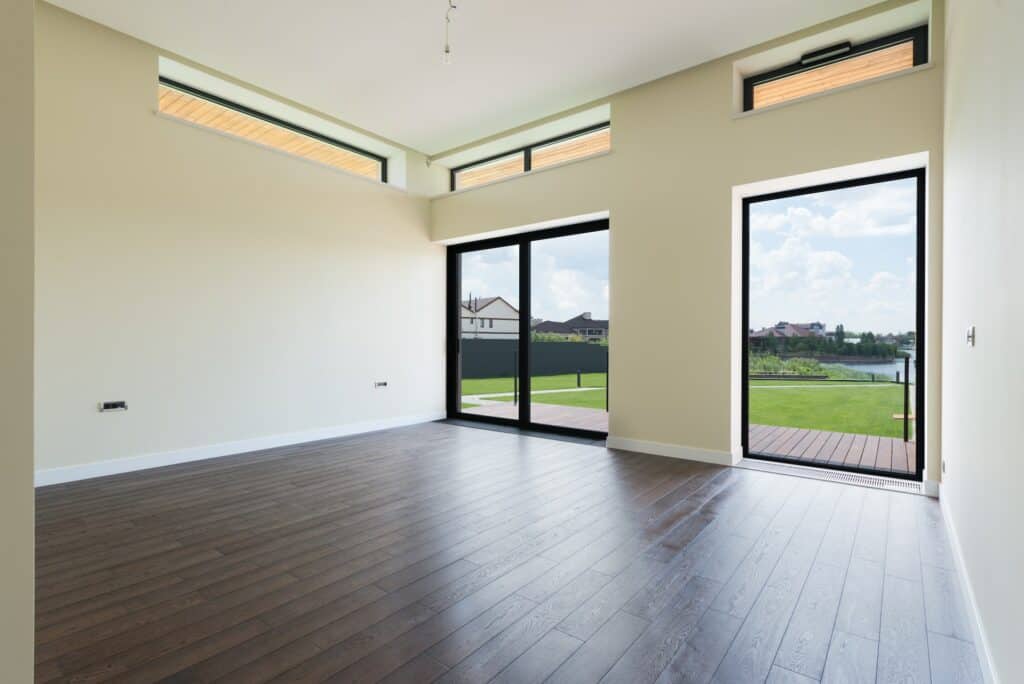Buying a House in New York State: A Guide
October 31, 2022
Despite New York City only being a small part of the state, it has an overwhelmingly large reputation. New York City is known for its huge metro area, iconic landmarks, and diverse population. On top of that, The City That Never Sleeps also has a very high cost of living which can make it a tough place to afford. However, New York State has many different cities and neighborhoods to live in that have a more affordable cost of living. Here is a step-by-step guide to buying a house in New York.
9 Steps To Buying a House in New York State

Step 1: Assess Your Financial Situation
When it comes to buying a house, many buyers think of the costs that need to be taken care of during the home-buying process. Closing costs and the down payment are important but the fees don’t end once you close on a home. There is the mortgage and then there are other fees that you have to take into consideration as well. Before you even start looking at houses, you need to assess your financial situation and make sure you have the means to support all of the costs that come with buying a house.
Property Tax
Property tax is an ongoing cost of being a homeowner with the national average tax rate at 1.07% of a home’s purchase price. The statewide property tax rate in New York is 1.69%. Some counties in New York have an increased tax rate of up to 2.5%. New York City, however, has a tax rate of 0.88%.
Step 2: Save For a Down Payment
In New York, the average home value is $781,622 according to Zillow. With a 20% down payment, home buyers would have to pay $156,324. Most home buyers would find a down payment that high to be daunting, if not impossible.
However, there are still options for home buyers who don’t have 20% to put down. First and foremost, the belief that a 20% down payment is required to buy a home is incorrect. Most first-time home buyers make a down payment that is closer to 10%, according to the National Association of Realtors.
One of the advantages of putting down 20% on a house is that you won’t be required to pay private mortgage insurance (PMI) every month. There are also many other options for those who need a lower down payment. Conventional loans are the most common type of mortgage for home buyers and the minimum down payment is usually 3% – 5%.
Government-backed loans like FHA, VA, or USDA loans can have an even lower minimum down payment amount and some require no down payment at all. You can also get a down payment assistance loan that can help new homeowners with the hefty upfront fee.
Step 3: Get Pre-Approved For a Mortgage Loan
Being pre-approved for a mortgage is when mortgage lenders check your credit rating, job history, and income to determine if you are eligible for a mortgage loan up to a specific amount. Getting pre-approved can give you a better idea of if you will be approved for the loan when you find a house. However, pre-approval is not a guarantee that a borrower will get a mortgage loan.
Also, pre-approval can be a sign to the seller that you are a buyer that is serious and financially able to purchase a house with the ability to receive financing. It also means that the seller will be more likely to accept your offer because a pre-approval shows that you are a serious buyer with the ability to get financing.
Pre-approval, however, is only valid for 30 to 90 days so make sure you stay within this time range when using it or else you may have to pay for pre-approval again.
Step 4: Choosing Where You Want To Live
There are many places to live in New York state ranging from big cities to small rural towns. It is important to choose a place to live that you will be happy with because you will most likely be living there for many years.
Zoning laws are also important to consider when choosing where to live as they can impact what type of house you can buy and how you can renovate your home in the future. Depending on where you live, you may not be able to rent out part of your home or you’ll need a Certificate of Occupancy to add a deck to your home. Working with a real estate professional can help you learn about different areas and the laws that govern them before you decide on where to live.
Step 5: Work With The Right Real Estate Agent
When making such a huge purchase like buying a house, making mistakes can be overwhelmingly detrimental to your long-term finances. The home-buying process is complicated and filled with opportunities for things to go wrong.
Having a good real estate agent by your side helps to make sure that you don’t make any costly mistakes. Real estate professionals have a comprehensive understanding of the home-buying process and the local real estate market. However, not all real estate agents are good at what they do and it can be difficult to find a reputable one.
If you want a streamlined way to find a good real estate agent, then you’ll want to work with a Negotiator. Negotiators are real estate agents that have all proven themselves to be top performers in their local real estate markets. They have closed a large volume of real estate deals and are skilled in the art of negotiation.
If you’re looking to buy your dream home and need help from a New York real estate agent who knows how to navigate these markets, search for local Negotiators here.
Step 6: Start House Hunting
With the help of a real estate agent, this is what could be considered the fun part of the home-buying process. The house hunt is where you’ll finally get to see all the different types of homes available in your budget and desired location.
You’ll begin attending open houses and scheduling private showings to get a better idea of what you do and don’t like in a home. It’s essential to take your time during this process and not rush into any decision.
This is a huge purchase, and you want to make sure that you’re buying a house that you’ll be happy with for years to come. It may help to create a list of non-negotiable needs that you need in your next home against the qualities that you desire.
The things that you desire are sacrificial in the sense that you may be willing to give them up if it means getting everything on your needs list.
Step 7: Make an Offer on a House
Making an offer is a crucial aspect of the home-buying process. The offer represents your interest in the property and will serve as the basis for all negotiations afterward. It sets the precedent for how the rest of the transaction will play out, so the offer needs to be well-structured and thought out.
An experienced real estate agent can help you put together a strong offer that protects your interests, engages the seller, and helps you get the home you want. There are a variety of components to an offer and if you’re preparing one, here are a few elements to include:
- Amount of money you want to offer on the house
- Contingencies
- Concessions
- Amount of earnest money deposit
- Preapproval letter
- Expected closing date
- Expected Move-in date
- Deadline to respond
Step 8: Appraisals and Home Inspections
After your offer is accepted, the home will need to be appraised to ensure that the price you’re paying is in line with the current market value. An appraisal is when a professional inspector does a thorough examination of the property to assess its true worth apart from the listing price. An appraisal is usually required by the mortgage lender and once the appraisal is complete, you’ll be one step closer to finalizing your loan and getting the keys to your new home.
However, even though appraisals can reveal issues within the property the purpose is not to be a home inspection. It’s important to schedule a separate home inspection with a licensed home inspector to get a detailed report of the property’s condition.
18 counties in New York require pest inspections for real estate purchases. The New York State Department of Health also recommends that home buyers do radon testing before closing if the seller hasn’t done a test in the last year.
Buying a house that has problems like a faulty roof or electrical wiring can be a nightmare and cost you a lot of money down the road. A home inspection will give you an accurate picture of the property’s condition so that you can make an informed decision about whether or not to move forward with the purchase. Many lenders also require inspections to finalize a loan.
Read More: How To Choose a Home Inspector
Step 9: Closing on the House
Closing day is the final and most important step in buying a house in New York. This is when the ownership of the property is officially transferred from seller to buyer and the mortgage is finalized for the loan amount.
In New York, a real estate attorney is not required during the closing process. However, New York does require disclosure statements from the seller to be given to home buyers at closing. Seller disclosure statements are forms that make the buyer aware of any known problems with the property. If a seller decides not to provide the buyer with a disclosure form, then they will have to pay the buyer $500 at closing.
Read More: 7 Things To Include in a Seller Disclosure Statement

